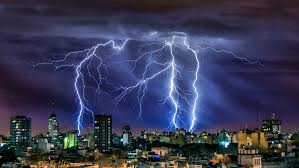The Art of Lightning Photography
Lightning is a powerful force of nature that has captivated photographers for generations. Capturing the raw energy and beauty of lightning strikes can be a challenging yet rewarding endeavour. Lightning photography requires patience, skill, and a keen eye for composition.
One of the key elements in successful lightning photography is timing. Anticipating when and where lightning will strike is crucial to capturing that perfect shot. Many photographers use remote triggers or intervalometers to increase their chances of capturing a lightning bolt in action.
Choosing the right location is also important in lightning photography. Open spaces with unobstructed views of the sky are ideal for capturing striking images of lightning against dramatic backdrops. Urban environments can provide interesting contrasts between man-made structures and natural phenomena.
When it comes to camera settings, a slow shutter speed is often used to capture the full extent of a lightning bolt’s path across the sky. A tripod is essential to keep the camera steady during long exposures. Experimenting with different exposure times and apertures can yield varied results, from crisp bolts of lightning to ethereal streaks across the sky.
Post-processing plays a significant role in enhancing lightning photos. Adjusting contrast, brightness, and saturation can bring out the details in the image and create a more dynamic visual impact. Some photographers also choose to convert their images to black and white for added drama.
Despite its challenges, lightning photography offers a unique opportunity to capture nature’s raw power in a single frame. The thrill of successfully capturing a dazzling display of electrical energy makes all the effort worthwhile for photographers who dare to chase storms and embrace the unpredictable beauty of lightning.
Top 5 Tips for Capturing Stunning Lightning Photography
- Use a tripod to keep your camera steady during long exposures.
- Shoot in manual mode to have control over your camera settings.
- Use a wide-angle lens to capture more of the sky and lightning bolts.
- Set a low ISO to reduce noise in your photos.
- Be patient and prepared to take multiple shots to capture the perfect lightning strike.
Use a tripod to keep your camera steady during long exposures.
Using a tripod is essential in lightning photography to ensure that your camera remains steady during long exposures. By stabilising your camera on a tripod, you can avoid blur caused by camera shake and capture sharp, detailed images of lightning strikes. A steady camera allows you to experiment with longer exposure times, enabling you to capture the full beauty and intricacies of lightning as it illuminates the sky. Investing in a quality tripod is key to achieving professional-looking results in your lightning photography endeavours.
Shoot in manual mode to have control over your camera settings.
To enhance your lightning photography skills, it is advisable to shoot in manual mode. By taking control of your camera settings, such as adjusting the shutter speed, aperture, and ISO, you can tailor them to suit the unique conditions of capturing lightning strikes. Manual mode allows for greater precision and creativity in your shots, enabling you to experiment with different settings to achieve the desired effect and produce striking images that truly showcase the beauty and power of lightning.
Use a wide-angle lens to capture more of the sky and lightning bolts.
When delving into the art of lightning photography, employing a wide-angle lens can significantly enhance your ability to capture the vast expanse of the sky and the intricate dance of lightning bolts. By utilising a wide-angle lens, you can encompass a broader perspective in your shots, allowing for a more immersive and dynamic portrayal of the electrifying spectacle unfolding in the heavens above. This approach not only amplifies the sense of scale and drama in your images but also enables you to showcase the interplay between the luminous streaks of lightning and the expansive canvas of the night sky, resulting in truly captivating and atmospheric photographs.
Set a low ISO to reduce noise in your photos.
Setting a low ISO is a crucial tip in lightning photography as it helps reduce noise in your photos. By using a lower ISO setting, you can maintain the clarity and sharpness of your images, especially in low-light conditions where noise can be more pronounced. This technique allows you to capture the intricate details of lightning strikes with greater precision and quality, resulting in stunning photographs that truly showcase the beauty and power of nature’s electrical displays.
Be patient and prepared to take multiple shots to capture the perfect lightning strike.
In the realm of lightning photography, patience and preparedness are essential virtues for capturing the elusive perfect shot of a lightning strike. By being patient and ready to take multiple shots, photographers increase their chances of seizing that fleeting moment of natural brilliance. Each attempt offers a new opportunity to freeze the mesmerising dance of light in the sky, ensuring that perseverance and readiness are key ingredients in the recipe for success in lightning photography.

